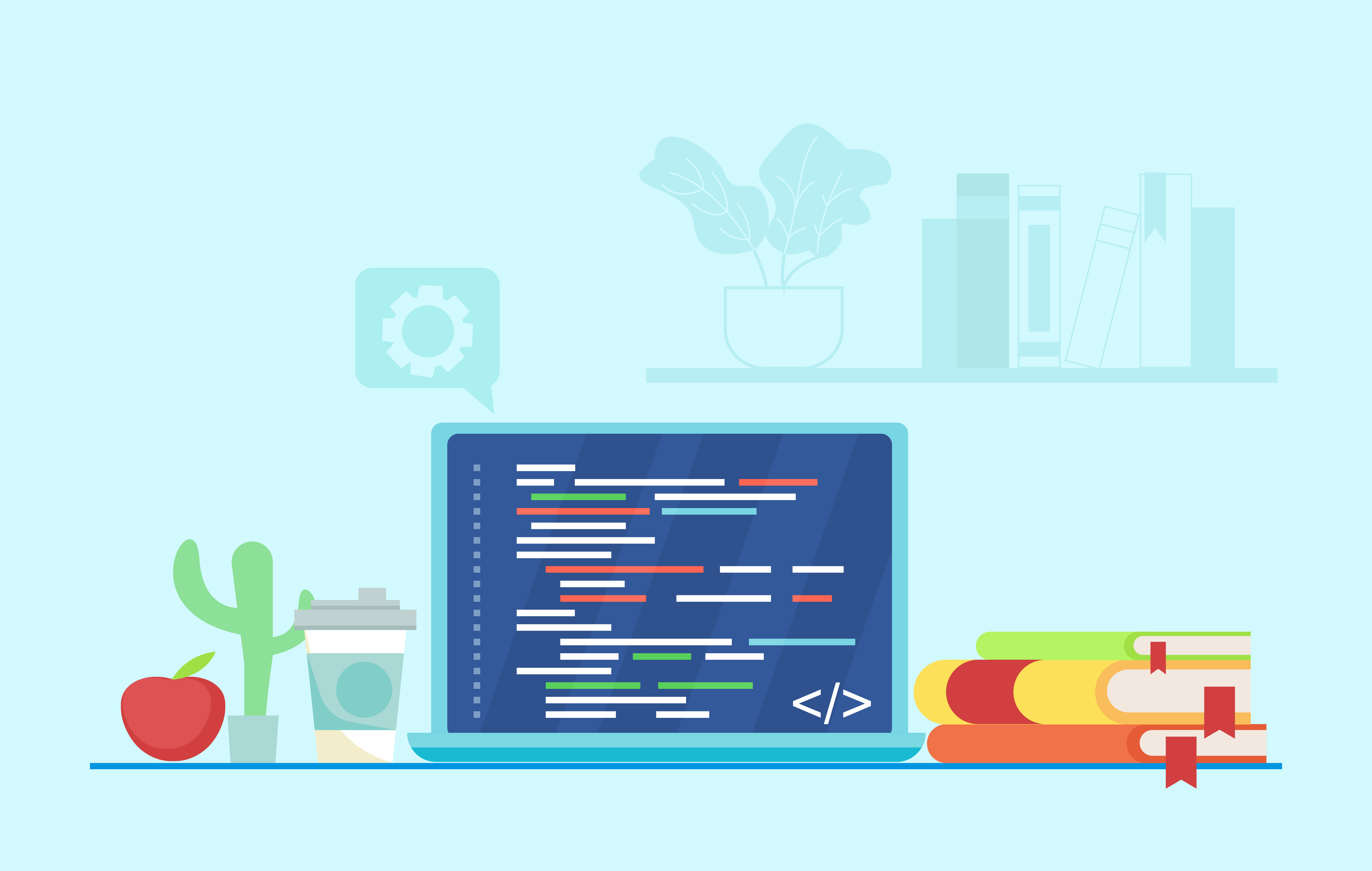The backend is the part of a website or app that works behind the scenes. It handles requests, processes information, and connects to databases. Two popular backend technologies are Node.js and PHP.
Node.js is fast and good for apps that need to handle many users at once. It runs on JavaScript, making it a great choice if you already use it for the front end. PHP has been around for a long time and powers many websites. It’s easy to use and works well with databases. Choosing between them depends on your project’s needs and your team’s skills.

What Is Node.js?
Node.js means a technology that allows developers to build websites and apps using JavaScript on the server side. It runs outside the browser, letting it handle tasks like fetching information, managing requests, and running scripts.
Many companies use Node.js for e-commerce, web applications, chat services, online games, and streaming platforms. It helps websites update content in real-time, like when messages appear instantly in a chat. It’s also useful for APIs, which let different apps and services connect and share information.
Benefits of Node.js:
- Same Language for Frontend and Backend. Developers can use JavaScript for both the front end and back end. This makes it easier to manage projects and share code.
- Handles Many Users at Once. Node.js is good at processing multiple requests without slowing down. This makes it useful for apps with high traffic, like social media or online stores.
- Works on Different Platforms. It runs on Windows, macOS, and Linux, so developers can build and test applications on any system.
- Large Community and Support. Many developers use Node.js, which means lots of free tools, guides, and ready-made solutions are available. This makes development faster and easier.
- Real-Time Features. Node.js is great for apps that need instant updates, like live chats, notifications, and online gaming.
Many businesses rely on Node.js because it makes modern web applications more interactive and responsive. It’s a powerful choice for creating fast, user-friendly online experiences.

What Is PHP?
PHP means a programming language used to build websites and online applications. It runs on the server and generates web pages before they appear in a browser. Many popular websites, including blogs, e-commerce stores, and forums, use PHP.
This language is best known for working with databases. It helps websites store and manage information, like user accounts, posts, and orders. WordPress, the most popular platform for building websites, is powered by PHP. Many businesses use it for content management systems, booking systems, and online stores.
Benefits of PHP:
- Easy to Learn and Use. PHP has a simple structure, making it easier for beginners to start building websites.
- Works Well with Databases. It connects easily with databases like MySQL. This makes it useful for sites that need to store user data, like login details or product listings.
- Compatible with Most Hosting Services. Many web hosting companies support PHP, so setting up a website is simple. There’s no need for special software or expensive servers.
- Open-Source and Free. PHP is free to use, so developers don’t need to pay for licenses. There are also many free tools and resources available.
- Strong Community Support. Since PHP has been around for a long time, there are thousands of tutorials, forums, and ready-made solutions to help developers.
- Great for Dynamic Websites. PHP makes websites more interactive. It helps update content, process forms, and display personalized information based on user activity.
Node.js and PHP are languages used for web development. PHP remains a popular choice in this field. It powers many sites and helps businesses build functional and user-friendly platforms.
How Node.js and PHP Handle Performance
Performance plays a big role in web development. The way a backend technology is built affects how fast it processes information, how much load it puts on the server, and how well it works with other services. Node.js vs PHP performance follows different approaches, which influence their speed and efficiency.
Different Architectures
Node.js uses a non-blocking model, meaning it can handle multiple requests at the same time. It does not wait for one task to finish before moving to the next. Instead, it moves forward and comes back to the task once it is done. This makes it great for apps that need to work in real-time, like chat applications or live updates on websites.
PHP, on the other hand, follows a blocking model by default. It processes one request at a time. When a user visits a webpage, PHP runs the necessary scripts and waits for each step to finish before moving on. This approach works well for sites where each request is independent, such as blogs or content-based websites. However, handling many users at once may slow down because it processes each request separately.
Speed of Processing
Since Node.js development does not wait for tasks to finish, it can handle multiple operations at once. This is helpful when working with databases or external services. If an app needs to fetch information from a database while also handling user actions, Node.js can manage both at the same time. This speeds up performance and makes interactions feel smooth.
PHP completes one task before moving to the next. If a request takes longer than expected, the process will not continue until it is done. For simple websites, this does not cause problems. However, for apps with frequent updates or high traffic, this method can slow things down.
When comparing Node.js vs PHP benchmark results, Node.js often performs better in handling concurrent requests due to its non-blocking nature. PHP, while efficient for traditional web applications, may struggle under heavy loads without additional optimization techniques.
Server Load
Node.js distributes work more efficiently. Since it can handle multiple requests together, it reduces the strain on the server. It does not create a separate process for each request, which means less memory and processing power is used. This makes it a good choice for applications with heavy traffic or real-time interactions.
PHP starts a new process for every request. If many users visit a site at the same time, the server needs to run multiple processes. This increases memory use and puts more pressure on the server. A strong hosting setup can handle this load, but high-traffic applications may require extra resources.
Working with APIs
Node.js is well-suited for working with APIs. Its ability to manage multiple tasks at once makes it ideal for handling API requests. It can fetch data from different sources without slowing down. This is useful for apps that rely on live updates, such as stock market platforms or delivery tracking services.
PHP also supports APIs, but its approach is different. Since it processes one request at a time, multiple API calls can slow things down. For simple interactions, like retrieving user details or submitting a form, PHP works fine. However, when comparing PHP vs. Node.js for the backend, PHP’s blocking model can cause delays.

Learning and Using Node.js vs PHP
Both Node.js and PHP are used to build websites and applications, but they have different ways of working. Some developers find one easier than the other, depending on their background and experience.
How Easy Are They to Learn?
PHP is often the first choice for beginners. The syntax is simple, and you don’t need to know a lot before writing your first website. Many website builders, like WordPress, use PHP, so it’s easy to see examples and learn from them. There are also plenty of tutorials, making it accessible to those who are new to coding.
Node.js requires knowledge of JavaScript. Since JavaScript is mostly used for frontend development, those who already work with it will find it easier to start with Node.js. However, when comparing PHP vs Node.js, understanding how Node.js manages requests and handles tasks can take more time. It follows a different approach than traditional programming languages, which may be confusing at first.
Writing Code and Development Process
PHP follows a structured way of handling requests. When someone visits a webpage, PHP runs scripts, processes the request, and sends a response. The way it works is easy to understand, especially for those who have built websites before. You don’t need any extra setup to start writing PHP code. A simple text editor and a local server are enough.
Node.js works differently. It uses JavaScript to handle multiple tasks at the same time. This makes it powerful, but it also means developers need to think differently when writing code. Setting up a Node.js project involves installing packages and managing dependencies. It’s not difficult, but it requires extra steps compared to PHP.
What Do They Have in Common?
PHP and Node.js have several things in common, despite their differences. Both are capable of handling requests, building webpages, and working with databases. Additionally, they provide a variety of hosting choices, enabling developers to run apps across several platforms.
Both have large communities. This means there are many tutorials, forums, and ready-made tools available. Developers using either PHP or Node.js can find help and solutions easily.
Another similarity is that both support modern web development practices. Whether building a simple website or a complex web application, PHP and Node.js offer tools to handle authentication, security, and database management.
Switching from PHP to Node.js
Making the switch to Node.js might first seem difficult for people who are already familiar with PHP. The way requests are handled is where Node.js and PHP diverge most. Node.js handles several jobs at once, whereas PHP processes handle a single request at a time. This implies that developers who decide to use Node.js must become knowledgeable in event-driven programming.
The good news is that both languages are used for web development, so many concepts remain the same. Working with databases, handling user input, and managing server responses are similar in both. The main difference is how they process information in the background. Once developers get used to the new approach, switching becomes easier.
For those moving from PHP to Node.js, the transition requires some learning, but it’s not impossible. The key to Node.js for PHP developers is to understand how requests are handled differently and get comfortable with JavaScript’s way of working. Once that is done, working with Node.js can feel just as natural as working with PHP.

Choosing Between Node.js and PHP for Your Project
The right technology depends on what kind of project you are building. Both Node.js and PHP can power websites and applications, but they work best in different situations. If your project needs real-time updates, handles many users at once, or involves interactive features, Node.js is a strong choice. It works well for modern applications that require fast responses and instant communication.
PHP is better for traditional websites, content management systems, and projects that rely on databases. It is easier to set up and works well with platforms like WordPress.
When to Choose Node.js:
- You are building a real-time application like a chat app or online games.
- Your website or app needs to handle many users at the same time.
- You are developing an interactive platform, such as a social media site.
- The project requires fast communication between the server and users.
- You want to use JavaScript for both frontend and backend development.
When to Choose PHP:
- You are creating a blog, news website, or content-based site.
- The project needs a database-driven system like an e-commerce store.
- You want an easy setup with built-in hosting support.
- You are working with WordPress, Joomla, or similar platforms.
- The website does not require real-time updates or live interactions.
So, which is PHP vs Node.js better? Both technologies can create great websites and applications. The best choice depends on your needs, the type of project, and the skills of your development team.
